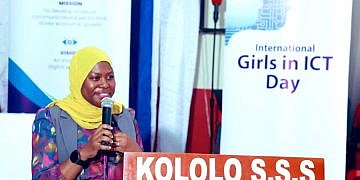The Ministry of Education has announced a new policy allowing the use of laptops, smartphones, tablets, and other ICT devices in primary and secondary schools across Uganda.
However, the introduction of these technologies comes with stringent controls to ensure they are used appropriately and do not become a source of distraction.
The policy was revealed by Education Minister Janet Museveni during the launch of the Education Digital Strategy, an initiative aimed at integrating Information and Communication Technologies (ICTs) into the country’s education system.
The strategy marks a significant step towards modernizing Uganda’s education sector by embracing the potential of digital tools to enhance learning.
Janet Museveni acknowledged the transformative potential of ICTs and the internet in improving education outcomes but emphasized the need for robust measures to regulate their use.
“While we are allowing mobile devices in schools, they must be configured to block unwanted and harmful content,” she stated.
The minister highlighted that all devices must receive approval from regulatory bodies such as the National Information Technology Authority of Uganda (NITA-U) to ensure they meet safety standards.
The minister also noted that while schools will monitor gadgets provided to students, regulating device use at home presents a different challenge.
She called on parents to be vigilant and actively involved in maintaining their children’s cyber safety outside of school hours.
“Parents have a critical role to play in ensuring that their children use technology responsibly at home,” Janet Museveni added.
Patrick Muyinda, Assistant Commissioner of ICT at the Education Ministry, underscored the government’s commitment to online safety for students.
“We want to ensure that all devices used in schools are pre-configured to prevent any potential risks,” Muyinda said.
He clarified that while school-provided devices will be allowed, privately owned gadgets will remain prohibited in schools to maintain control over the digital environment.
The shift towards incorporating digital learning tools gained significant momentum during the COVID-19 pandemic, which forced many educational institutions to adopt technology-led education methods.
Despite challenges such as inadequate policies, limited infrastructure, and the need for teacher training, the Ministry of Education remains dedicated to advancing Uganda’s Digital Agenda.
UNICEF Country Representative Dr. Munir Safieldin, who was present at the launch, urged the government to focus on the practical implementation of the Digital Agenda.
He stressed the importance of developing the necessary infrastructure, equipping schools with the required resources, and training teachers to effectively use digital tools in the classroom.
“It is essential that we move beyond policy announcements and ensure that every school is adequately prepared for this digital transition,” Safieldin said.
The Ministry of Education has committed to investing approximately shs1.3 trillion over the next seven years to implement the Digital Agenda.
This substantial investment will focus on developing localized digital content, updating the curriculum to include digital literacy, expanding e-learning opportunities, and improving digital services and connectivity infrastructure across the country.
The launch event for the National Digital Agenda Strategy took place at the Lugogo Hockey Grounds in Kampala.
It was attended by a wide range of dignitaries, including government ministers, Members of Parliament, international development partners, and representatives from the private sector, all of whom expressed support for the initiative.
The new policy allowing ICT devices in schools is seen as a critical step in preparing Uganda’s students for a rapidly changing world where digital literacy is becoming increasingly important.
By setting stringent controls and ensuring that devices are used responsibly, the Ministry of Education aims to harness the power of technology to improve education while safeguarding students from potential risks








































